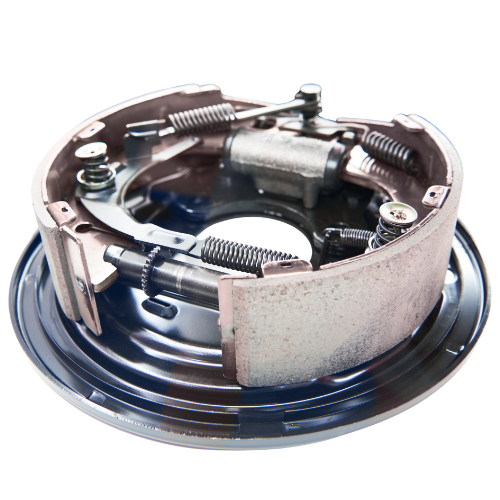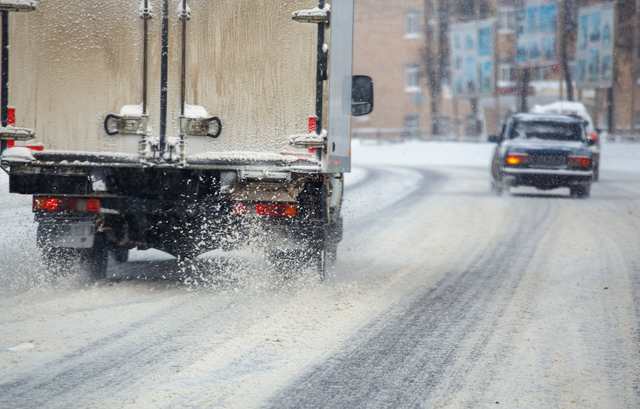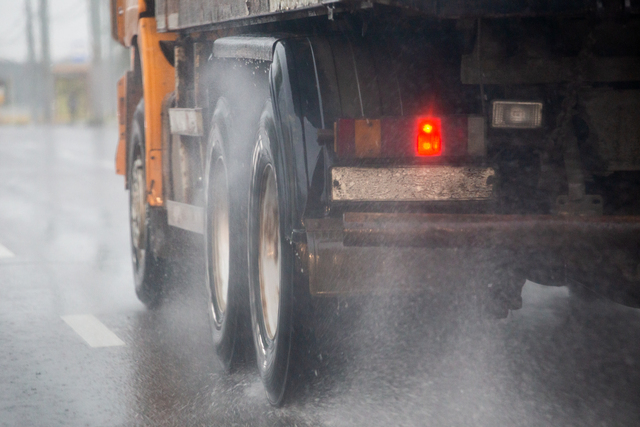Explore the four key components that make up a truck’s brake system—engineered to ensure safe, reliable, and powerful stopping performance on every road.

From icy roads in winter to the blazing heat of summer, temperature and moisture levels directly impact the function of key components like the brake chamber, slack adjuster, brake calipers, and brake shoes.
This article explores how different weather conditions influence braking systems and what steps you can take to maintain safety year-round — especially if you’re operating heavy vehicles with systems such as brake chambers or American axles.

Cold climates bring unique challenges to braking systems. When temperatures drop, various components respond differently, often making stopping less reliable.
1. Brake Fluid Thickening
Cold temperatures can cause brake fluid to thicken, reducing its ability to flow quickly through the system. This slows down your response time when you press the brake pedal, which can be especially risky on icy or wet roads.
2. Hardened Brake Pads and Shoes
Brake pads and brake shoes can harden in freezing weather, which lowers friction and results in longer stopping distances. While not always noticeable during short trips, this can make a difference in emergencies.
3. Corrosion from Salt and Moisture
In areas where roads are salted during winter, components like brake calipers, slack adjusters, and brake chambers are exposed to corrosive conditions. Corrosion can reduce the effectiveness of your brakes or even cause parts to fail prematurely if not addressed through regular inspection and maintenance.
While cold weather slows brake performance, heat presents an entirely different risk: brake fade.
1. Overheating Components
When brakes are used repeatedly in hot conditions — such as during towing or driving downhill — they generate heat. This heat can cause brake pads to lose friction, meaning they won’t grip as well. In severe cases, the brakes may feel soft or unresponsive.
2. Material Degradation
Heat can accelerate the wear and tear of organic brake materials. For vehicles using brake chambers or air brakes, the pressure-based system may remain consistent, but the mechanical parts still suffer from excess heat exposure.
3. Fluid Expansion
High heat can cause brake fluid to expand or boil, resulting in spongy brake pedals or reduced performance. Ensuring proper fluid levels and condition helps prevent this issue.

Moisture — whether from rain, humidity, or condensation — can also compromise brake function.
1. Reduced Friction on Wet Surfaces
Water can form a film on the surface of brake shoes and rotors, reducing grip. While most modern systems are designed to resist this, vehicles with worn or poorly maintained brakes may struggle to maintain consistent stopping distances.
2. Corrosion Over Time
Moisture can lead to rust on parts like brake calipers, lines, and slack adjusters. If you’ve ever heard a grinding noise after a rainy night, that could be a thin layer of rust forming. Regular driving usually removes it, but over time, deeper corrosion can develop and impact performance.
Let’s look at how specific parts are affected across different climate conditions:
1. Routine Inspections
Have your brakes inspected regularly, especially before and after seasonal changes. Pay special attention to parts like brake chambers and slack adjusters that are exposed to road debris and salt.
2. Choose the Right Brake Pads
Not all brake pads are the same. Some materials perform better in cold or hot climates. Ask your technician to recommend a product suited to your environment.
3. Maintain Brake Fluid
Keep brake fluid clean and at the correct level. Contaminated or old fluid can thicken in cold weather or boil in extreme heat, leading to poor performance.
4. Protect Against Corrosion
If you live in an area with heavy rainfall or winter road salt, consider having your braking components cleaned and treated to resist corrosion.
5. Understand Seasonal Impacts
Learning how your vehicle responds to different climates helps you anticipate changes in braking behaviour — from extended stopping distances to delayed pedal response.
Climate plays a major role in how well your braking system functions. Whether it’s the thickening of brake fluid in winter, brake fade in summer, or rust in humid conditions, being aware of how weather affects components like brake chambers, air brakes, brake shoes, and slack adjusters helps you stay prepared and safe on the road.
Regular maintenance, seasonal inspections, and using climate-appropriate parts can go a long way in preventing brake failure and ensuring reliable performance no matter where — or how — you drive.
Q: Why do my brakes feel different in winter?
A: In cold temperatures, brake fluid may thicken and brake pads may harden, both of which can reduce brake responsiveness.
Q: What is brake fade, and how can I avoid it?
A: Brake fade happens when brakes overheat and lose their ability to generate friction. Avoid riding the brakes on long downhill drives and use engine braking when possible.
Q: How do air brakes perform in extreme weather?
A: Air brakes are generally reliable, but they require proper maintenance. In freezing conditions, moisture in the lines can cause freezing, and in heat, air pressure may fluctuate.
Q: Should I replace brake parts before winter or summer?
A: It’s a good idea to have your braking system checked before any extreme seasonal changes. Look for signs of wear or corrosion, especially on brake chambers, brake shoes, and slack adjusters.
Q: What’s the role of a brake line bender?
A: It’s a tool used to shape metal brake lines, especially during repairs. In cold climates, lines are more brittle, so bending must be done with care.